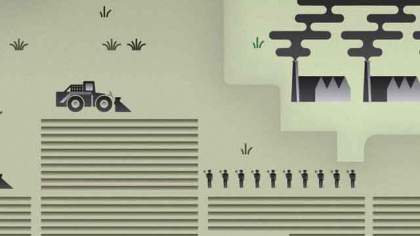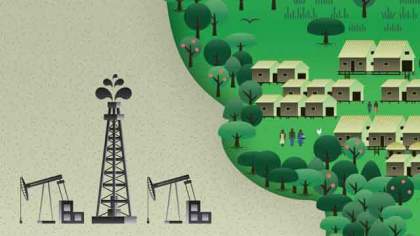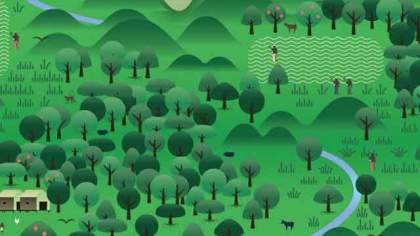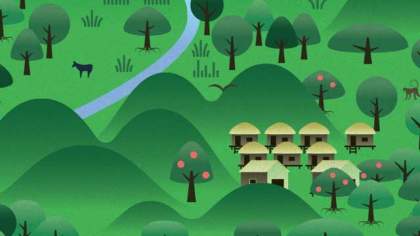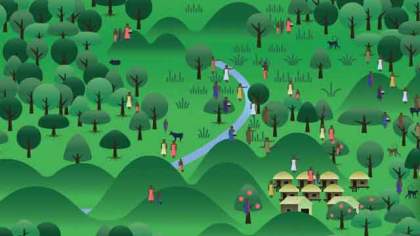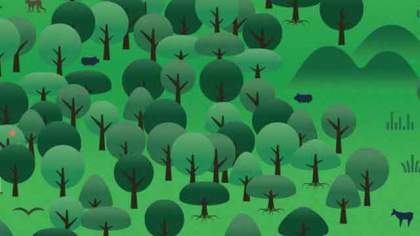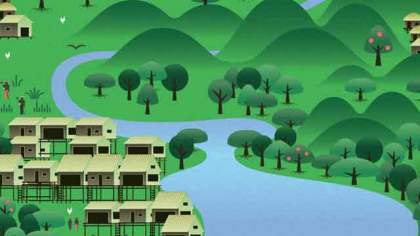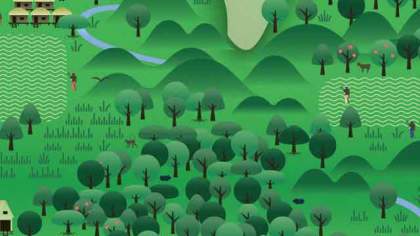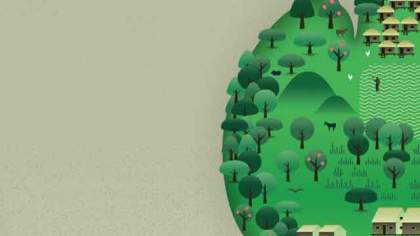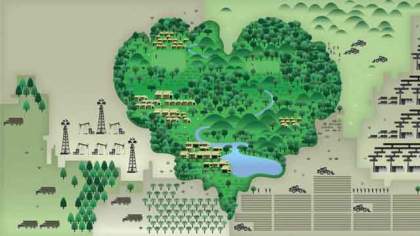-
What is 'Communications' about?
This video looks at the ways three communities in Indonesia, Tanzania and Ecuador are using radio, internet, mainstream national and international media and video to bring the stories of their struggles to both the wider world and their local areas.
Length of Video
12 minutes
Download 'Communications' here
Suggestions for Discussion Questions after community screenings
- What are the key messages that are important to share about your community?
- In what ways do you want to share information about your community to the wider world?
- In what ways does your community share information within your community? How can this be improved?
Suggestions for Follow-up Activities after community screenings
- Form a communications sub-group to research the options of developing a community-led communications strategy to help defend your territory and rights.
- What would you need to do to set up a community radio? Go away and do some research into community radios - there are probably a few near you. Look into what you would need to be able to set up one in your local area. What equipment would you need? What kinds of permission would you need and what are the costs involved?
- Would video be useful to you and your community? In groups, think about what story you feel would be important to tell about your community. How could you tell this story through video? What equipment would you need?
-
Documents and Downloads
How to do community radio: a primer for community radio operators
Several ways and means are possible to set up a community radio, organize it or compose its equipment. This primer builds on the experience of Tambuli (Tinig ng Aming Munting Bayan Upang Umunlad Ang Maliliit or the Voice of the Community) in the Philippines, which in the past ten years has grown from one community radio to a network of 25 stations. Often located in remote rural areas, these stations are “operated in the community, for the community, about the community and by the community” (L. Tabing/UNESCO, 2002).
Campaigning with Grassroots Comics
Many people think that comics are mainly for children. However, what we call ”Grassroots comics” is a powerful medium for ordinary people’s expression and reading. This manual explains how comics can help in establishing public participation and making a campaign. (Sharad Sharma / World Comics, 2009)
Wallposter Comics
Grassroots comics are different from the mainstream comics, these comics are made by common people themselves. These comics are photocopied and distributed to a limited area, which encourage local debate in the society. Grassroots Comics are inexpensive and method is not complicated, you just required a pen, paper and access to a copying machine to produce one. This guide explains step-by-step how to produce you own comic and use it to inspire community debate. (Sharad Sharma / World Comics)
Other videos
Voices Through Time
“Voices Through Time” documents how men, women and youth members of the Indigenous Communicators Network of Peru supported by CHIRAPAQ, use the radio as well as new information and communication technologies, as tools to take control of their representation in the media, preserve their cultures and identities, and defend and exercise their rights. In their own voices the women involved in this process explain to us the impact that communication has had on their communities and the importance self-expression has in their lives. The aspiration of the Network is to construct a national system of communication expressly from and for indigenous peoples (CHIRAPAQ / UNPFII, 2010.)
Related links
Intercontinental Cry
An online journal dedicated to news, films and reports on indigenous peoples around the world.
Indigenous Rights Radio
Indigenous Rights Radio uses the power of community radio to inform Indigenous communities of their rights. We envision a world in which Indigenous communities, equipped with knowledge of their rights, are empowered to protect their lands, languages, and cultures. Cultural Survival’s Indigenous radio producers gather stories from Indigenous Peoples around the world. In English, Spanish, and a growing array of Indigenous languages, we bring the voices of the native peoples of Australia, Asia, Africa, Europe, and the Americas into dynamic dialogue about the meaning of Indigenous Peoples’ rights, their common struggles, and their evolving and innovative solutions to the problems they face today (Cultural Survival).
Minority Voices Newsroom
The minority voices newsroom is an online multimedia library that allows people to upload, download and share their stories. Members of minorities and indigenous communities, and their advocates, are encouraged to upload first-hand accounts, interviews, reports, pictures, audio and video footage addressing issues of importance to them.
WITNESS Video Advocacy Training Guide
This WITNESS Video Advocacy Training Guide incorporates some of the best practices and lessons learned by WITNESS and its allies over the past 18 years. It was created to help human rights defenders and activists evaluate and plan how best to integrate video into their advocacy work and is full of useful tips on how to use visual media as a tool that will engage people to create change.
Global Voices Special Coverage: Indigenous Rights
Special Coverage on Indigenous Rights by Global Voices includes a number of articles and blogs as well as an extensive resource lists
Flattened Forests
Remote tribal communities in Papua have for the first time used digital video to tell the outside world about the impact uncontrolled logging is having on their traditional way of life. Training was provided by London-based Environmental Investigation Agency and Jakarta-based, Telapak. Providing financial incentives to developing countries to reduce deforestation will be high on the agenda at the Bali UN climate change conference (The Guardian, 2007).
GIMP - Free and Open Source Image Editor
GIMP is a freely distributed program for such tasks as photo retouching, image composition and image authoring.
Audacity
Audacity is free and open source software for recording and editing sound.
StoryMaker
StoryMaker is an open source app that enables you to produce and publish professional-grade news using an Android phone, as safely and securely as possible.
Voice Recorder
This free mobile phone app allows you to record all your audios into mp3.
Soundcloud
Soundcloud is an audio platform that enables you to upload, record, promote and share your originally-created sounds.
Periscope
Periscope lets you broadcast live video direct from your phone.
Video Editor
This app allows you to edit video on Android mobile phones.
WordPress
Create a free website or easily build a blog on WordPress.com.
Communications - Territories of Life
Hear about communities that have used radio, video and other communication strategies to strengthen their struggles.





